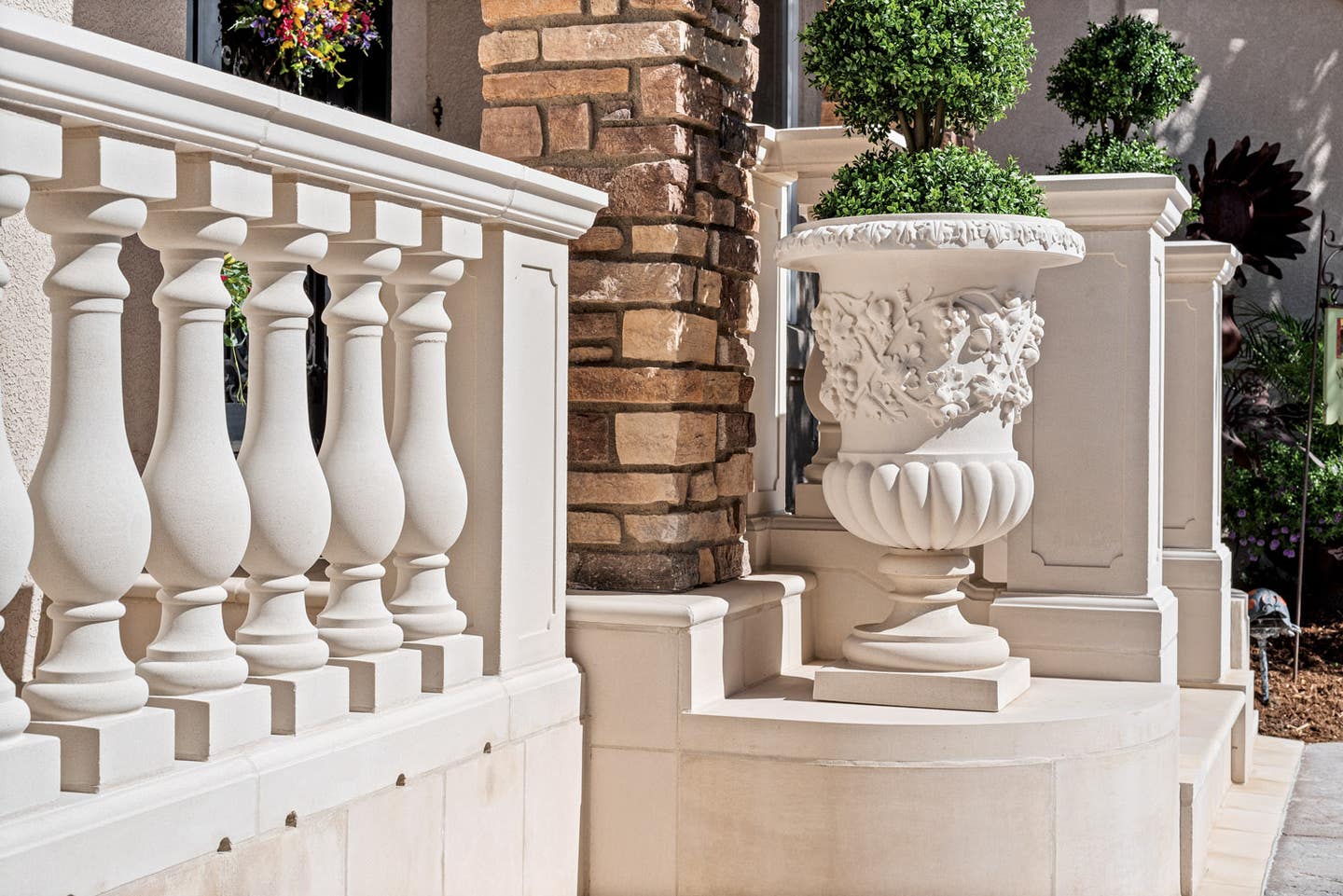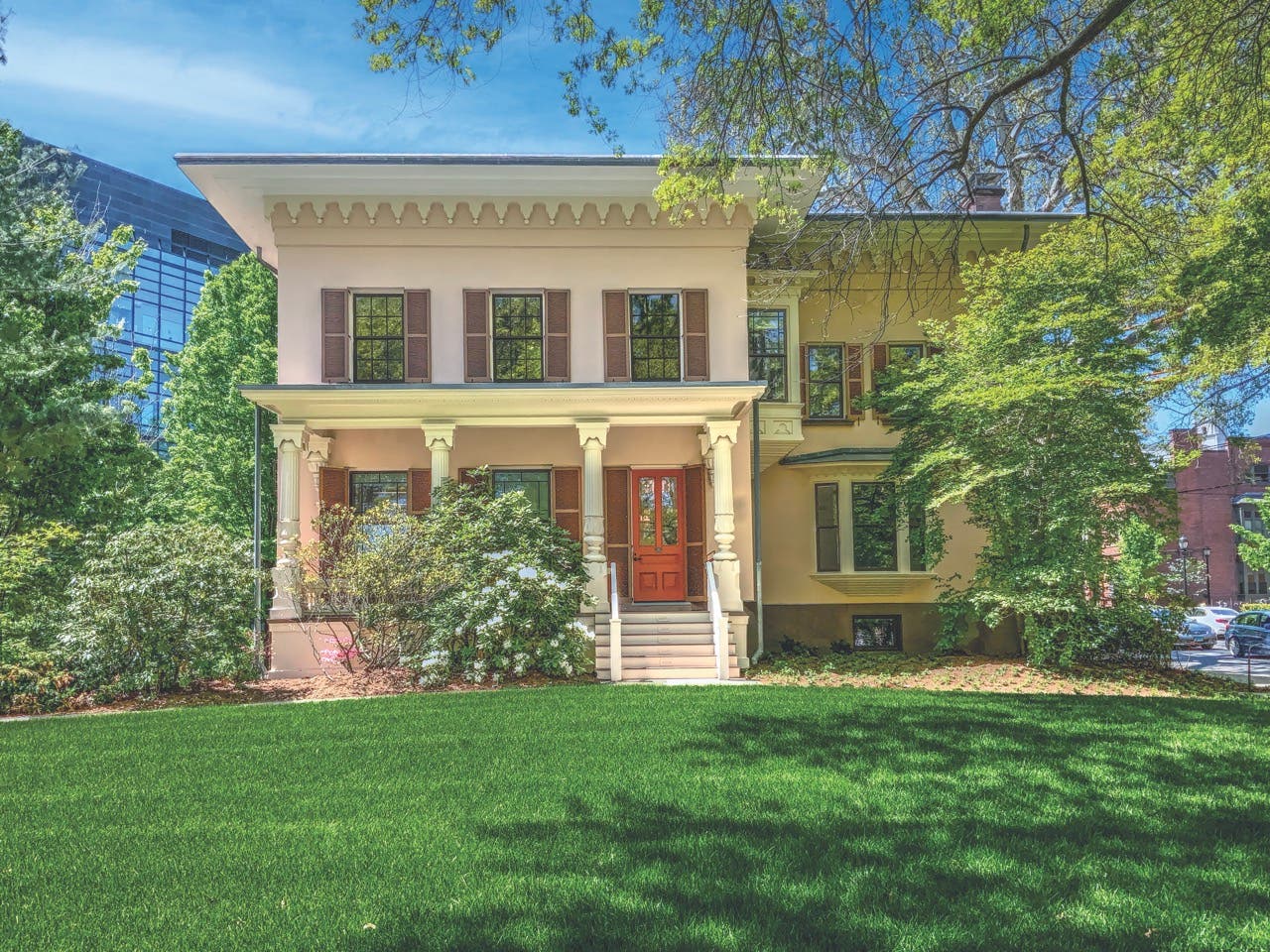
Product Reports
Cast in Stone
When it’s not practical or appropriate to use natural-cut stone in projects, architects often specify architectural cast stone, which has been a prime building material for hundreds of years.
Although the oldest example of its use is in the remains of a medieval fortification in Carcassonne, France, dating back to 1138, cast stone didn’t become an architectural building unit until much later. By 1900, it was used extensively in London, and by 1920 it had crossed the Atlantic to America.
Although there are several products on the market that simulate stone and are made of concrete, not all of them can be classified as architectural cast stone, according to Jan Boyer, executive director of the Cast Stone Institute, an industry group whose mission is to assure that the highest quality architectural cast stone is used in projects.
By institute standards, architectural cast stone is defined as “a refined architectural concrete building unit manufactured to simulate natural cut stone and used in unit masonry applications.”
Architectural cast stone, which generally is non-structural and anchored to load-bearing masonry wall systems, can be made from white and/or gray cements, manufactured or natural sands, carefully selected crushed stone or well graded natural gravels, mineral coloring pigments, and admixture. It achieves the desired color and appearance while maintaining durable physical properties that exceed most natural-cut building stones.
It can be fabricated by one of three methods—dry tamp, wet cast, or machine made—and is specified to meet or exceed the standards of ASTM C1364, Standard Specification for Architectural Cast Stone.
Calling architectural cast stone “a truly superior alternative to natural-cut building stone,” Boyer points to its versatility. “Used as an architectural feature, trim, ornament, or veneer for buildings or other structures, it has a fine-grain texture to simulate all types of natural-cut stone, including limestone, granite, slate, travertine, and marble.”
She adds that “it’s often the material of choice for restoration projects where it can easily replicate intricate stone original pieces. As such, it tends to be on buildings of great stature.”
The Cast Stone Institute
A non-profit trade association, the Cast Stone Institute was formed in 1927 to develop standards, disseminate information, and educate designers and users of the inherent value, quality, and best practices in the use of architectural cast stone.
The Cast Stone Institute does not just make industry recommendations—it works within recognized reference standards documents, such as ASTM, to assure the specifier of the highest quality cast stone.
To enhance this effort, Standards for Architectural Cast Stone (TMS 404-504-604 for the Design, Fabrication and Installation) were developed in 2016 through The Masonry Society. These new standards were adopted into the 2018 version of the International Building Code.
Recognizing the importance of quality cast-stone production to the viability and longevity of a building or landscape project, 18 years ago, the institute developed a plant certification program. Over the years, it has been enhanced to make it one of the most rigorous certification programs in the construction industries.
The institute’s members provide a 10-year limited product warranty on their products.
Technical specification, technical bulletins, and related materials are included in the Cast Stone Institute Technical Manual that is available for free download from their website.
Capital Cast Stone
This family-owned company, which is based in Lebanon, Indiana, has been in business since 2008. It has 17 employees and specializes in commercial, residential, and landscape/hardscape projects.
“My wife and I run the main portion of the day-to-day operations,” says president Troy A. Deppe, adding that the artisans have many years of combined casting and mould-making experience. “Our main priority is the craftsmanship and attention to detail that results in a product that stands the test of time. We strive to provide material to you when needed and to give you the best customer service possible.”
Haddonstone
A specialist in hand-crafted architectural stonework and home and garden ornaments, Haddonstone offers over 500 standard designs in traditional, contemporary, and classical styles as well as made-to-order cast-stone products.
The 50-year-old company, which has facilities in Pueblo, Colorado, and the United Kingdom, is managed by David Barrow, the son of the founder.
“We pride ourselves on our classic designs, which were Greek and Italian historically,” says president David West, adding that Haddonstone’s seven original garden designs are still in production. “We’re able to achieve a lot of detail because the molds for our ornaments are rubber in Fiberglass surrounds. We use timber molds for simpler profiles.”
Haddonstone is a member of the United Kingdom Cast Stone Association and the Institute of Classical Architecture & Art.
Siteworks
A full-service company for commercial and residential projects, Siteworks supplies everything from modular stone veneer, window and door trim, and hardscapes to custom medallions and entries as well as a line of bespoke cast-limestone fireplace mantels.
“We are capable of handling projects sized from simple neighborhood monuments up to complex governmental, institutional projects that use in excess of $1 million of cast stone,” says president Troy McCune, adding that Siteworks has supplied stone for the Brockman Music and Performing Arts Center at Rice University in Houston, the Reed Arena and Kyle Field at Texas A&M University and the National Memorial Cemetery of the Pacific in Honolulu.
He notes that cast stone is “most appropriate for any masonry project looking to add elegance and longevity in a cost-savings manner compared to natural dimensional stone” and adds that it’s a suitable replacement for calcium silicate.
Siteworks, which was established in 1989, produces cast stone products that exceed the industry’s highest ASTM standards.
Sun Precast Co.
A specialist in historical restoration, Sun Precast Co. fabricates cast stone for commercial, residential, institutional, and landscape projects.
The company, which is based in Central Pennsylvania, was established in 1978 and has supplied stone for a variety of sites on the East Coast, including the Edison Memorial Tower in New Jersey, West Point’s Taylor Hall, Princeton University Press, Yale University, New York City’s Central Park Bandshell, Bucknell University, and Longwood Gardens.
“Our company is 100 percent employee-owned, and over 35 percent of them have been with us for more than 20 years,” says Joe Schmadel, president and CEO. “The experience of our employees is instrumental in the premium quality of our products.”








